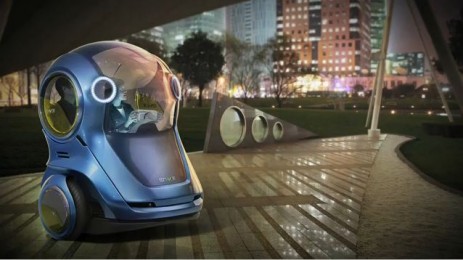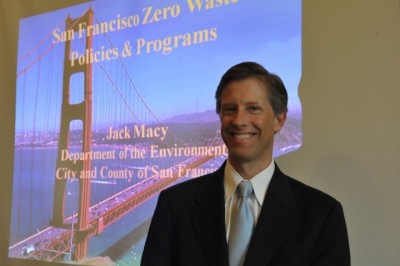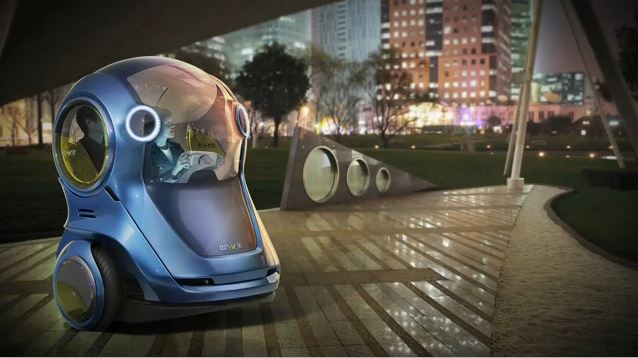 Is this how we’ll get around in the future?According to Chris Borroni-Bird, director of GM’s advanced technology vehicle concepts work, we’re about to see a new chapter in the story of cars and cities. “In the past 100 years, the automobile has shaped the city … in the future, the opposite will be the case: cities will shape mobility.”
Is this how we’ll get around in the future?According to Chris Borroni-Bird, director of GM’s advanced technology vehicle concepts work, we’re about to see a new chapter in the story of cars and cities. “In the past 100 years, the automobile has shaped the city … in the future, the opposite will be the case: cities will shape mobility.”
Sounds interesting — but if it’s true, how will we get about in 2040? With most big cities already struggling to provide effective mass transit, and the world’s population growing and converging on urban areas, there’s a crisis of mobility heading our way. At Forum for the Future, we’ve just constructed four scenarios for the future of urban mobility in megacities (i.e. those over 10 million), speculating about how these and other forces, including declining fossil-fuel availability and patterns of city governance, might play out in the next 30 years. The work has yielded four rather different future megacity scenarios, brought to life as animations.
“Renew-abad” is a city where alternative energy–fueled, high-tech, clean transport gets everyone around. Under strong leadership, the city’s confidence and autonomy has grown and urban density is increasing. Sophisticated augmented reality systems reduce the demand for physical travel, but for essential journeys, computer-guided electric and hybrid vehicles rub along with cyclists and pedestrians on massively improved infrastructure.
In “Sprawl-ville,” the dominant urban form is huge low density suburbs, and mobility is still dependent on fossil-fuel powered cars. The elite still get around, but it’s a 24-hour city with never-ending congestion, and poor public transport infrastructure means the majority are either stuck in ghettos or reliant on unregulated paratransit. Nomad businesspeople sit in armored cars, working while moving slowly from meeting to meeting. Others return to buses and bicycles as their principal means of mobility.
For the citizens of “Planned-opolis,” high energy prices and continuing reliance on fossil fuels mean transport is tightly organized and rationed. To meet carbon targets, the central district is closed to cars and 10 million newly planted trees shade the walkways. Many people have moved out to join the millions in new cities — some floating off the coast, others entirely virtual.
You will search in vain for the center of “Communi-city,” where devolved power, localized energy generation, and a DIY approach to life mean the city is a cluster of autonomous communities. The roads are a chaotic racetrack for buses running on home-brew biofuels, kit-made bicycles, covered scooters, pod cars, and motorbikes, but somehow it all works through the smart use of IT to avoid collisions and optimize routes.
Entertaining viewing, we hope. But what use is it to dream these dreams? The point of scenario planning is to use plausible futures to test strategy now. What are the sensible next steps for megacities planning for an uncertain future and wanting to avoid a mobility crisis? The study proposes a to-do list that includes curbing car use, prioritizing the mobility needs of the poor, sharpening up integration between modes, refueling vehicles with low-carbon alternatives to gasoline, and changing behavior so that people travel fewer miles and by less damaging modes.
Whether our growing ranks of megacities will be able to apply this advice remains to be seen. But they can’t simply carry on as they are and hope for the best — the changes coming at them are too great and too serious to leave future mobility to chance. And the prize for getting it right is enormous. As Sue Zielinski, sustainable mobility expert at the University of Michigan and one of the experts interviewed for the project, puts it, “The goal is not transport but accessibility — more productivity, more mobility, more beauty in one day.” Quite so. But the gap between that vision and present reality is enormous and growing for the 3 billion of us urbanites, never mind the further 2 billion or so who will be joining us by midcentury, mostly in developing countries.
Confirmation, once again, that the battle for sustainability will be won or lost in cities. This point is not lost on the many businesses — among them GE, sponsor of our Sustainable Cities Index — tooling up to provide the integrated city solutions of tomorrow. It’s also not lost on the mayors of 135 big cities who met in Mexico City at the invitation of Mayor Marcelo Ebrard last week. The World Mayors Summit on Climate saw Ebrard and many of his peers sign a pact on climate action and issue a call to national governments go further in the run-up to Cancun. That such huge cities still feel hamstrung by national and international inaction is worrying, but their growing confidence and significance on the world stage points to a more promising future. Even London, hardly a bastion of sustainability, now has some good stories to tell, not least the huge popularity of Mayor Boris Johnson’s rent-a-bike scheme, which has put him on the map in much the same way the congestion charge did for his predecessor Ken Livingstone. Small steps toward sustainable urban mobility, perhaps, but progress nonetheless.
Check out the full report: Megacities on the Move: Your Guide to the Future of Sustainable Urban Mobility in 2040 [PDF].



